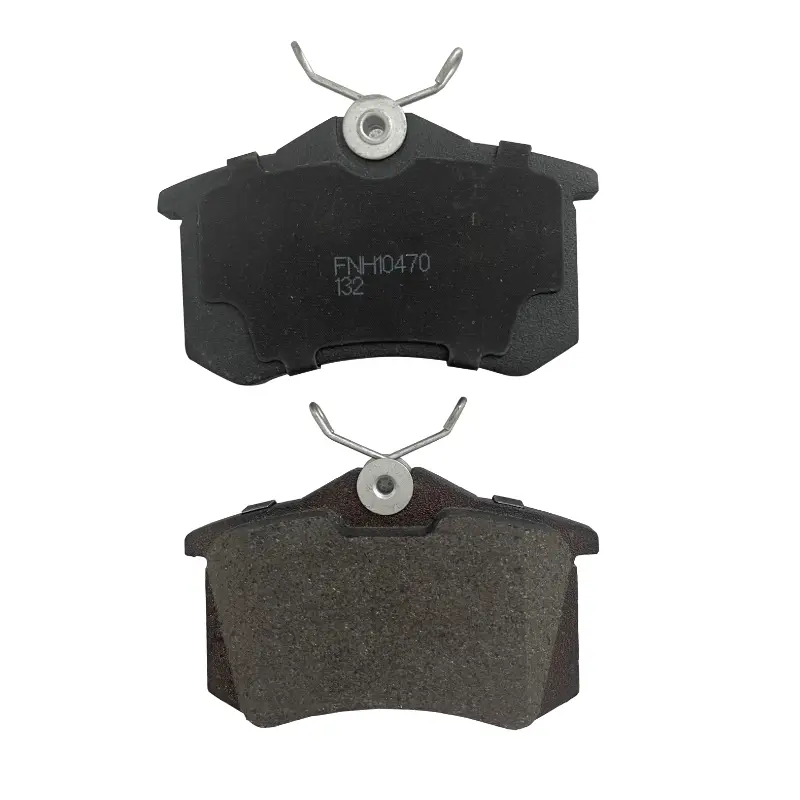Advantages Of Heat Dissipation In Low Metallic Brake Pads
Are you tired of dealing with brake pads that overheat and wear out too quickly? Look no further, because we have the solution for you. In this article, we will explore the many advantages of heat dissipation in low metallic brake pads. From improved performance and longevity to reduced brake fade, you won't want to miss out on this game-changing technology. So, if you're ready to upgrade your braking system and enjoy a smoother, more reliable driving experience, keep reading to learn more about the benefits of low metallic brake pads with effective heat dissipation.
Advantages of Heat Dissipation in Low Metallic Brake Pads
When it comes to vehicle safety, the braking system plays a crucial role. The brake pads are essential components of this system, as they are responsible for creating the friction necessary to slow down or stop the vehicle. In recent years, low metallic brake pads have gained popularity due to their superior heat dissipation properties. In this article, we will explore the advantages of heat dissipation in low metallic brake pads and why they are a superior choice for vehicle owners.
1. The Importance of Heat Dissipation in Brake Pads

Brake pads work by converting kinetic energy into thermal energy through friction. This process generates a significant amount of heat, especially during heavy braking or in high-speed driving conditions. If the heat generated is not dissipated effectively, it can lead to brake fade, decreased braking performance, and even brake failure. Therefore, heat dissipation is a critical factor in the design and performance of brake pads.
2. Low Metallic Brake Pads: The Solution for Heat Dissipation
Low metallic brake pads are composed of a blend of organic materials, such as rubber, synthetic fibers, and friction modifiers, as well as a small percentage of metal fibers. This unique combination allows for superior heat dissipation compared to traditional semi-metallic brake pads. The metal fibers in low metallic brake pads act as heat sinks, absorbing and dissipating heat more efficiently, which helps to maintain consistent braking performance under high-temperature conditions.
3. Advantages of Heat Dissipation in Low Metallic Brake Pads
One of the primary advantages of heat dissipation in low metallic brake pads is the reduction of brake fade. Brake fade occurs when the friction material on the brake pads becomes overheated and loses its ability to create friction with the rotors. This can result in a spongy brake pedal, increased stopping distances, and a loss of overall braking power. By effectively dissipating heat, low metallic brake pads help to minimize the risk of brake fade, ensuring reliable braking performance even during demanding driving situations.
4. Extended Brake Pad Lifespan
In addition to improved braking performance, the superior heat dissipation of low metallic brake pads can also lead to an extended lifespan. High temperatures can accelerate the wear of brake pads, causing them to deteriorate more quickly. By reducing the heat buildup and thermal stress on the brake pads, low metallic formulations can help to increase the longevity of the brake pads, ultimately saving vehicle owners money on replacements and maintenance costs.
5. Frontech Low Metallic Brake Pads: The Reliable Choice
Frontech Auto Parts offers a range of low metallic brake pads that are engineered to deliver exceptional heat dissipation and braking performance. Our brake pads are designed to meet the demands of modern vehicles and driving conditions, providing drivers with confidence and peace of mind when on the road. With Frontech low metallic brake pads, you can experience the advantages of superior heat dissipation, extended lifespan, and reliable braking performance.
In conclusion, the advantages of heat dissipation in low metallic brake pads are undeniable. These advanced brake pad formulations offer improved braking performance, extended lifespan, and increased safety for vehicle owners. When it comes to choosing reliable brake pads, Frontech low metallic brake pads are the superior choice for those who prioritize safety and performance.
Conclusion
In conclusion, the advantages of heat dissipation in low metallic brake pads cannot be overstated. From improved braking performance and reduced brake fade to extended brake pad and rotor lifespan, the benefits are clear. By utilizing advanced materials and innovative designs, manufacturers are able to produce low metallic brake pads that effectively manage heat, resulting in safer and more reliable braking systems for vehicles. As technology continues to evolve, we can expect even greater advancements in heat dissipation for brake pads, further enhancing the driving experience for all. So, next time you're in the market for new brake pads, consider the advantages of heat dissipation in low metallic options for a smoother and more efficient ride.
















